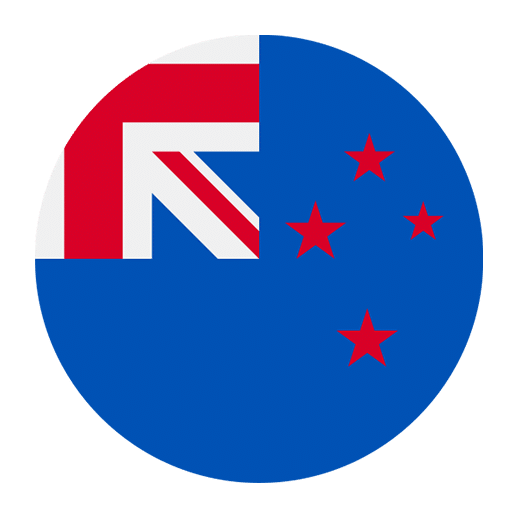Māori storytelling traditions are an integral part of New Zealand’s rich cultural heritage. These traditions, known as pūrākau and pūrakau, have been passed down through generations, preserving the history, values, and identity of the Māori people. Understanding these storytelling practices not only provides insight into Māori culture but also offers valuable lessons for language learners and enthusiasts. This article delves into the importance of Māori storytelling traditions, exploring their origins, significance, and the role they play in contemporary society.
Origins and Significance of Pūrakau and Pūrākau
The terms pūrakau and pūrākau are often used interchangeably, though they can refer to slightly different aspects of Māori storytelling. Pūrakau refers to the traditional narratives or legends that explain the origins of the world, the gods, and the ancestors of the Māori people. These stories are deeply rooted in Māori cosmology and spirituality, offering explanations for natural phenomena and the human condition.
Pūrākau, on the other hand, encompasses a broader range of storytelling, including myths, legends, and historical accounts. These stories often carry moral lessons and cultural values, serving as a means of education and social cohesion. Both pūrakau and pūrākau are oral traditions, emphasizing the importance of spoken language and the role of the storyteller in preserving and transmitting knowledge.
The Role of Storytellers
In Māori culture, storytellers, known as kaumātua or elders, hold a revered position within the community. They are the keepers of knowledge, responsible for passing down the stories, traditions, and wisdom of their ancestors. The act of storytelling is considered a sacred duty, requiring a deep understanding of the language, culture, and history of the Māori people.
Storytellers use a range of techniques to engage their audience, including vivid descriptions, metaphors, and rhythmic language. They often incorporate chants, songs, and gestures to enhance the storytelling experience, creating a dynamic and immersive performance. This oral tradition emphasizes the importance of listening and active participation, fostering a sense of connection and belonging within the community.
Preservation of Language and Culture
One of the most significant aspects of Māori storytelling traditions is their role in preserving the Māori language, te reo Māori. As an oral tradition, pūrakau and pūrākau rely on the spoken word, reinforcing the importance of language in conveying meaning and cultural identity. Through storytelling, the nuances and subtleties of te reo Māori are maintained, ensuring that the language remains vibrant and relevant.
Moreover, these storytelling traditions serve as a repository of cultural knowledge, encapsulating the values, beliefs, and customs of the Māori people. They provide a window into the past, offering insight into the lives and experiences of Māori ancestors. By preserving these stories, the Māori community maintains a strong sense of identity and continuity, fostering resilience and pride in their heritage.
Lessons for Language Learners
For language learners, exploring Māori storytelling traditions offers a wealth of opportunities to deepen their understanding of te reo Māori and Māori culture. Here are some key lessons that can be drawn from pūrakau and pūrākau:
1. The Power of Oral Tradition
Māori storytelling traditions highlight the importance of oral language in communication and cultural transmission. As language learners, engaging with oral traditions can enhance listening and speaking skills, promoting fluency and confidence in the target language. Listening to native speakers and participating in storytelling activities can also improve pronunciation, intonation, and rhythm, fostering a more natural and authentic use of the language.
2. Cultural Context and Meaning
Understanding the cultural context of a language is essential for meaningful communication. Māori storytelling traditions provide rich cultural context, offering insight into the values, beliefs, and customs of the Māori people. By studying these stories, language learners can develop a deeper appreciation for the cultural significance of the language, enhancing their ability to use it appropriately and respectfully.
3. Storytelling as a Learning Tool
Storytelling is a powerful pedagogical tool that can be used to facilitate language learning. Through stories, learners can acquire new vocabulary, grammar structures, and idiomatic expressions in a memorable and engaging way. Stories also provide a narrative framework that helps learners make connections between different language elements, promoting retention and comprehension.
4. The Role of Creativity and Expression
Māori storytelling traditions emphasize creativity and expression, encouraging storytellers to use their imagination and performative skills to bring stories to life. For language learners, embracing creativity and expression can make the learning process more enjoyable and effective. By incorporating storytelling, role-playing, and other creative activities into language practice, learners can develop their communicative competence and confidence.
Contemporary Relevance
In contemporary New Zealand society, Māori storytelling traditions continue to play a vital role in cultural preservation and education. There has been a resurgence of interest in te reo Māori and Māori culture, driven by efforts to revitalize the language and promote cultural understanding. Pūrākau and pūrakau are integral to these efforts, serving as a bridge between the past and the present.
Education and Revitalization
Māori storytelling traditions are increasingly being integrated into educational curricula, providing students with opportunities to learn about Māori culture and language. Schools and educational institutions are incorporating pūrakau and pūrākau into their programs, using them as tools to teach te reo Māori, history, and cultural values. This approach not only enriches the learning experience but also fosters a sense of respect and appreciation for Māori heritage.
Community and Identity
For the Māori community, storytelling remains a vital means of reinforcing cultural identity and social cohesion. Community events, such as kapa haka performances and cultural festivals, often feature storytelling as a central component, bringing people together to celebrate their shared heritage. These events provide a platform for kaumātua to pass down their knowledge and for younger generations to connect with their roots.
Media and Technology
The advent of digital media and technology has also opened new avenues for the preservation and dissemination of Māori storytelling traditions. Online platforms, podcasts, and social media are being used to share pūrakau and pūrākau with a wider audience, reaching people both within and beyond New Zealand. These digital initiatives are helping to ensure that Māori stories remain accessible and relevant in the modern world.
Conclusion
Māori storytelling traditions, encompassing pūrakau and pūrākau, are a cornerstone of New Zealand’s cultural heritage. These oral traditions preserve the language, history, and values of the Māori people, fostering a sense of identity and continuity. For language learners, engaging with these storytelling practices offers valuable lessons in oral language, cultural context, and creative expression.
As contemporary society embraces efforts to revitalize te reo Māori and promote cultural understanding, pūrakau and pūrākau continue to play a crucial role. By integrating these traditions into education, community events, and digital media, we can ensure that Māori stories are preserved and celebrated for generations to come. Through the power of storytelling, we can connect with the past, enrich the present, and inspire the future.

